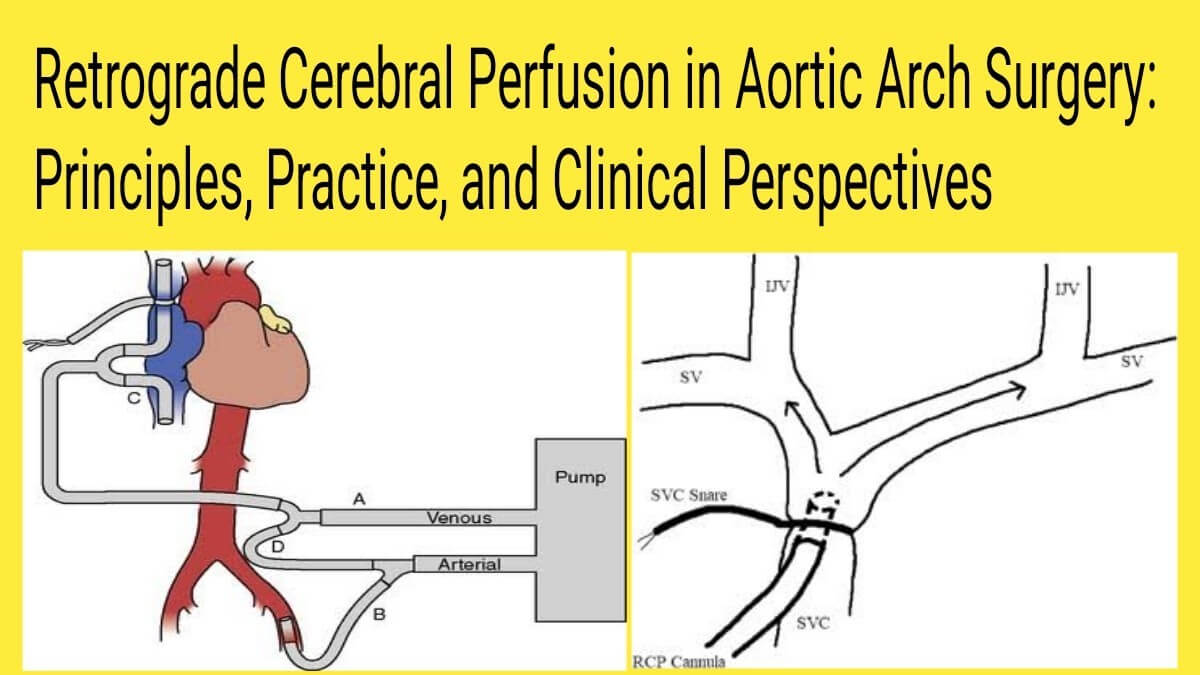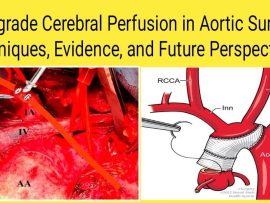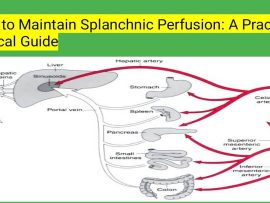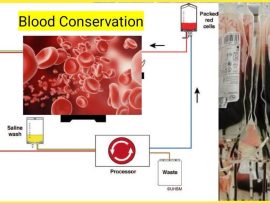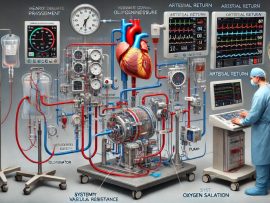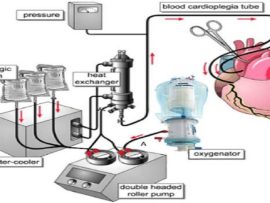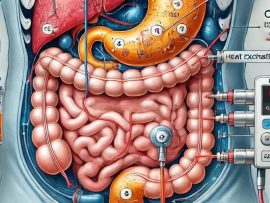Abstract Introduction Perfusion accidents still threaten the safety of perfusion during open-heart surgery. To prevent these accidents and increase perfusion safety, it is important to first determine the profile of..
Read More1. Introduction Sickle Cell Disease (SCD) is a chronic, inherited blood disorder resulting from a single point mutation in the β-globin gene. This mutation leads to the production of hemoglobin..
Read MoreIn modern cardiac surgery, cardiopulmonary bypass (CPB) plays a life-saving role. It allows the heart to be stopped safely while the body is perfused with oxygenated blood. However, it’s a..
Read More1. Introduction Cerebral protection is a cornerstone of successful aortic arch surgery, where the brain is highly vulnerable during periods of circulatory arrest. While deep hypothermic circulatory arrest (DHCA) alone..
Read More1. Introduction Aortic arch surgery presents significant neurologic risks due to the potential for cerebral ischemia during circulatory arrest. Traditional methods such as deep hypothermic circulatory arrest (DHCA) provided limited..
Read MoreIntroduction: More Than Just a Tube In the world of cardiopulmonary bypass (CPB), the arterial cannula is far more than a simple conduit for blood flow. Every feature—from the shape..
Read MoreIn the complex world of cardiopulmonary bypass (CPB), where precision, safety, and efficiency govern every aspect of patient care, the significance of flow dynamics cannot be overstated. While the primary..
Read MoreIntroduction Splanchnic perfusion refers to the blood flow through the splanchnic circulation, which supplies the gastrointestinal organs including the stomach, intestines, liver, pancreas, and spleen. Maintaining adequate splanchnic blood flow..
Read MoreIntroduction The heart is nature’s pulsatile pump, delivering rhythmic surges of blood critical not only for oxygen transport but also for maintaining vascular health. Cardiopulmonary bypass, a lifesaving intervention, often..
Read MoreIn cardiopulmonary bypass (CPB), roller and centrifugal pumps have been the mainstays for decades, each with unique benefits and challenges. However, these traditional blood pumps come with inherent pressure-related risks..
Read MoreIntroduction Cardiopulmonary bypass (CPB) is fundamental to modern cardiac surgery, allowing surgeons to perform complex procedures on a still and bloodless heart. However, traditional CPB systems are associated with complications..
Read MoreAbstract Background: Medical mission trips address the global burden of cardiac disease, particularly in Sub-Saharan Africa, where limited access to cardiac surgery exacerbates challenges faced by affected individuals. However, a..
Read MoreIntroduction: Cardiopulmonary bypass, a cornerstone of modern cardiac surgery, temporarily diverts blood away from the heart and lungs, allowing for surgical intervention in a controlled environment. During CPB, blood is..
Read MoreCardiopulmonary Bypass (CPB) is one of the most critical advancements in cardiac surgery. It allows the surgical team to operate on a non-beating heart by temporarily taking over the functions..
Read MoreIntroduction Cardiopulmonary bypass (CPB) has long been a cornerstone of cardiac surgery. However, conventional CPB circuits are associated with a range of physiological disturbances including hemodilution, inflammatory response, and coagulopathy...
Read MoreIntroduction Cardiac surgery is a highly specialized and complex field that requires the seamless coordination of multiple professionals, each bringing their expertise to ensure a successful outcome. The success of..
Read MoreIntroduction: A Heart That Pauses, A Circuit That Lives When the heart is arrested during cardiac surgery, life continues—thanks to cardiopulmonary bypass (CPB). The theoretical underpinnings of CPB stem from..
Read MoreAbstract Perfusionists are central to life-sustaining interventions such as cardiopulmonary bypass (CPB), extracorporeal membrane oxygenation (ECMO), and mechanical circulatory support. While the technical dimensions of their work are well recognized,..
Read MoreAbstract This case report discusses a rare and critical perfusion accident during a minimally invasive coronary artery bypass grafting (CAGB) procedure, where a Eurosets Skipper oxygenator burst 3 minutes after..
Read MoreIntroduction Cardiopulmonary bypass (CPB) is a cornerstone of modern cardiac surgery, facilitating a bloodless and motionless field for surgeons. Traditionally, hyperoxia—elevated levels of arterial oxygen tension (PaO₂)—has been employed during..
Read MoreIntroduction Cardiopulmonary bypass (CPB) is a lifesaving technology in cardiac surgery, but it introduces blood-material interactions that trigger inflammatory and coagulative responses. To address these issues, advancements in biocompatible CPB..
Read MoreIntroduction Extracorporeal circulation (ECC), used in cardiopulmonary bypass (CPB) and extracorporeal membrane oxygenation (ECMO), serves as a temporary replacement for the heart and lungs. It maintains tissue perfusion and gas..
Read MoreIntroduction Cardiopulmonary bypass (CPB) has been the cornerstone of modern cardiac surgery, allowing for safe cardiac arrest while maintaining systemic perfusion. However, the debate between pulsatile and non-pulsatile flow during..
Read MoreIntroduction Cardiopulmonary bypass (CPB) is a vital component of cardiac surgery, allowing surgeons to perform complex procedures on a still, bloodless heart. However, CPB is associated with significant hemodilution, coagulopathy,..
Read MoreIntroduction Cardiopulmonary bypass (CPB) is essential in cardiac surgery, but high-risk patients—such as pediatric, geriatric, and renal-compromised individuals—require specialized priming strategies to optimize outcomes. A one-size-fits-all approach can lead to..
Read MoreIntroduction Cardiopulmonary bypass (CPB) is a critical component of cardiac surgery, allowing the heart to be temporarily stopped while maintaining circulation and oxygenation. Proper hemodynamic management during CPB is essential..
Read MoreIntroduction Cardiopulmonary bypass (CPB) is a life-saving technology that temporarily replaces the heart and lungs during cardiac surgery. The choice of priming solution plays a crucial role in maintaining hemodynamic..
Read More1. Introduction Cardioplegia plays a crucial role in myocardial protection during cardiac surgery by inducing controlled cardiac arrest and minimizing ischemic injury. Over the years, various cardioplegia strategies have evolved,..
Read MoreIntroduction Isolated Limb Perfusion (ILP) is a targeted chemotherapy technique used primarily for treating locally advanced limb malignancies, such as soft tissue sarcomas and melanoma. By isolating the limb’s vascular..
Read MoreIntroduction Hyperthermic Intraperitoneal Chemotherapy (HIPEC) is an advanced oncologic perfusion technique designed to treat peritoneal carcinomatosis, a condition where cancer spreads within the peritoneal cavity (Sugarbaker, 1995). This innovative approach..
Read More



